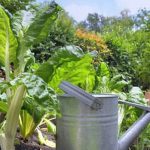Why are vegetable gardening planters so expensive? As more people turn to vegetable gardening, the demand for planters has surged, impacting their cost. The materials used, size and design, durability, and additional features all contribute to the high prices. Brand reputation and market demand also play a role in the pricing of planters. In this article, we will explore the factors contributing to the high cost of vegetable gardening planters and provide alternatives for those looking to save money.
With the recent surge in popularity of vegetable gardening, driven by a desire for sustainable living and access to fresh produce, there has been a corresponding increase in the need for gardening planters. As more people seek ways to grow their own fruits and vegetables at home, the demand for planters has skyrocketed, resulting in higher prices.
One major factor influencing the cost of vegetable gardening planters is the materials used in their construction. From traditional terra cotta pots to modern composite materials, each type of material comes with its own price tag and impact on the overall cost of a planter. Additionally, factors such as size and design also contribute to the pricing of planters, as larger or more intricate designs often come with a higher price tag.
The durability and longevity of gardening planters also play a significant role in their cost. Those constructed from long-lasting materials or designed to withstand harsh weather conditions often come with a higher price due to their quality and ability to last longer. Furthermore, additional customization options and features can drive up the price even further, making it essential for consumers to carefully consider their needs when purchasing planters.
The Cost of Materials
When it comes to the high cost of vegetable gardening planters, one of the primary factors is the materials used in their construction. Different types of materials vary widely in cost, with some being significantly more expensive than others.
For example, planters made from cedar or redwood tend to be more costly due to the quality and durability of these woods. Additionally, metal planters such as those made from stainless steel or aluminum can also drive up the price due to their long-lasting nature and resistance to corrosion.
Furthermore, higher-end materials such as fiberglass or composite materials are often used in specialized or custom planters, adding to their expense. These materials offer unique advantages such as lightweight construction and intricate designs, but they also come at a premium cost. On the other hand, basic plastic or resin planters may be more affordable but lack the same level of durability and aesthetic appeal.
In addition to the material itself, the thickness and quality of the material also impact the overall cost. Thicker and sturdier materials are generally more expensive because they provide greater stability and longevity for the planter. This is particularly important for outdoor planters that need to withstand harsh weather conditions and constant exposure to moisture.
| Material | Impact on Cost |
|---|---|
| Cedar or Redwood | High due to quality and durability |
| Metal (Stainless Steel/Aluminum) | Costly due to long-lasting nature and resistance to corrosion |
| Fiberglass/Composite | Premium cost for lightweight construction and intricate designs |
| Plastic/Resin | More affordable but lack durability and aesthetic appeal |
Size and Design
When it comes to vegetable gardening planters, size and design play a significant role in determining their price. The larger the planter, the more materials are required to build it, which can drive up the cost. Additionally, intricate or unique designs may require more labor or specialized skills to create, adding to the overall expense.
Impact of Size
The size of a vegetable gardening planter has a direct impact on its cost. Larger planters not only require more materials such as wood, metal, or plastic for construction but also demand more resources during manufacturing and transportation. As a result, larger planters tend to be more expensive compared to their smaller counterparts. However, larger planters also offer the advantage of accommodating a greater volume of soil and plants, allowing gardeners to grow a wider variety of vegetables.
Design Complexity
The design of vegetable gardening planters can range from simple and utilitarian to elaborate and ornate. Intricate designs may involve additional craftsmanship and skill, leading to higher production costs. Moreover, unique or custom-designed planters often come with a premium price tag due to the individualized attention and specialized materials required for their construction. As such, the complexity and uniqueness of the design can significantly impact the price of gardening planters.
Ultimately, when considering the size and design of vegetable gardening planters, it’s important for consumers to weigh their preferences against their budget constraints. While larger or more intricately designed planters may come with a higher price tag, they also offer specific benefits that could justify the investment for avid gardeners. By carefully evaluating these factors alongside their own gardening needs and limitations, individuals can make informed decisions about purchasing vegetable gardening planters despite their typically high cost.
Durability and Longevity
When it comes to vegetable gardening planters, durability and longevity are key factors that contribute to their high cost. This section will explore the importance of having durable planters and how it affects their price.
Quality Materials
One of the main reasons why vegetable gardening planters can be expensive is the use of high-quality materials. Planters made from durable materials such as cedar, redwood, or thick plastic are designed to withstand harsh weather conditions and the wear and tear of outdoor use. These sturdy materials not only increase the longevity of the planter but also contribute to its higher cost compared to planters made from cheaper, less durable materials.
Long-Term Investment
While the initial cost of purchasing a durable vegetable gardening planter may seem high, it is important to consider it as a long-term investment. Durable planters are built to last for many years, saving gardeners from having to constantly replace cheaper, low-quality options that may deteriorate over time. The longevity of these planters ultimately justifies their higher price as they offer a sustainable and reliable solution for growing vegetables.
Maintenance and Sustainability
In addition to their durability, high-quality vegetable gardening planters often require less maintenance over time. Their ability to resist rotting, warping, or fading means that they will continue to look and function well with minimal upkeep. Furthermore, investing in durable planters aligns with sustainable gardening practices by reducing waste generated from frequently replacing lower-quality planters. All these factors contribute to why vegetable gardening planters with a focus on durability and longevity may come at a higher cost.
Customization and Features
When it comes to vegetable gardening planters, the option for customization and additional features can significantly impact their price. Many planters come with advanced features such as built-in irrigation systems, self-watering mechanisms, and adjustable height settings, all of which contribute to their higher cost.
These added features not only enhance the functionality of the planters but also make them more convenient for gardeners. Additionally, customized designs and personalized options can also drive up the price of planters, as manufacturers may charge extra for unique specifications or tailored finishes.
Furthermore, certain materials used in the construction of vegetable gardening planters can be more expensive, especially when they are designed to withstand harsh weather conditions or have special protective coatings. For example, planters made from durable materials such as cedar wood or rust-resistant metal will often be pricier than those made from standard plastic or clay. The use of high-quality materials and advanced features adds to the overall cost of manufacturing these specialized gardening containers.
It is important to note that while these customization and additional features come at a higher price point, they offer added value and benefits to gardeners who prioritize convenience, durability, and aesthetics in their gardening efforts.
| Customization and Features | Impact on Price |
|---|---|
| Built-in irrigation systems | Contributes to higher cost |
| Durable materials and protective coatings | Increases overall manufacturing cost |
| Personalized options and customized designs | May lead to higher pricing for unique specifications |
Brand and Reputation
When it comes to vegetable gardening planters, the brand and reputation of the manufacturer can have a significant impact on the price. Many well-known and established brands in the gardening industry have a strong reputation for producing high-quality, durable, and innovative planters.
As a result, their products often come with a premium price tag. Consumers are willing to pay more for these trusted brands because they believe they will get a superior product that will last for many seasons.
Certain brands also invest heavily in research and development to create unique features and customizable options for their planters. These additional features can drive up the price, but they also offer added value to consumers who are looking for specific functionalities or aesthetic appeal in their gardening equipment.
Furthermore, the reputation of a manufacturer plays a crucial role in determining the price of gardening planters. Brands that have a long-standing history of producing reliable and long-lasting products often command higher prices due to their established track record of quality. This reputation gives consumers confidence in their purchase, knowing that they are investing in a product that is built to last.
In addition to the brand and reputation, another factor that influences the price of gardening planters is market demand and supply. When there is high demand for a particular brand or type of planter, manufacturers may increase the price to capitalize on consumer interest.
Conversely, lower demand or oversupply can lead to discounted prices as manufacturers try to move inventory. Ultimately, there are various factors at play that contribute to the high cost of vegetable gardening planters, with brand and reputation being just one piece of the puzzle.
Market Demand and Supply
When it comes to the high cost of vegetable gardening planters, market demand and supply play a crucial role in determining the pricing of these essential items. Here are some factors that contribute to the expensive nature of gardening planters:
- High Demand: The surge in popularity of vegetable gardening has led to an increased demand for planters. With more people looking to start their own home gardens, the demand for planters has skyrocketed, putting pressure on suppliers to meet this need.
- Material Scarcity: The materials used in making quality gardening planters, such as cedar or redwood, can be scarce and expensive. This scarcity drives up the cost of production, which is then passed on to consumers.
- Supply Chain Disruptions: The global supply chain disruptions caused by various factors, including the COVID-19 pandemic, have led to shortages of raw materials and increased transportation costs. These disruptions further contribute to the high price of gardening planters.
These factors combined create a perfect storm for high prices in the vegetable gardening planter market. As more people embrace the benefits of growing their own vegetables and herbs at home, the demand for quality planters continues to rise. This increased demand, coupled with material scarcity and supply chain disruptions, creates a situation where vegetable gardening planters become more expensive.
Alternative Cost-Saving Options
When it comes to vegetable gardening, the initial investment in planters can be a significant factor for many individuals. So why are vegetable gardening planters so expensive? While factors like materials, size, design, durability, and brand reputation certainly contribute to the high cost of these planters, there are alternative cost-saving options available for those looking to save money.
One way to save money on vegetable gardening planters is to consider DIY options. Building your own planters using reclaimed materials or inexpensive lumber can significantly reduce the overall cost. There are plenty of online tutorials and resources available that provide step-by-step instructions for constructing your own planters at a fraction of the cost of store-bought options.
Another cost-saving alternative is to explore second-hand or thrift stores for gently used planters. Oftentimes, individuals will discard or donate their old planters in good condition, presenting an opportunity to acquire them at a discounted price. Additionally, online marketplaces and community groups often have listings for free or low-cost planters that can be repurposed for vegetable gardening.
For those who prefer new planters but still want to save money, shopping sales and clearance events at local garden centers or home improvement stores can yield affordable options. Another option is to purchase basic, utilitarian planters and then customize them with paint or other decorative elements to achieve a personalized look without the high price tag associated with designer or specialty planters.
By being creative and resourceful, it is possible to find cost-effective alternatives for vegetable gardening planters without sacrificing quality.
Conclusion
In conclusion, the surge in popularity of vegetable gardening has created a high demand for planters. This, coupled with the various factors that contribute to their high cost, has led to an increase in the price of vegetable gardening planters. The cost of materials, size and design, durability and longevity, customization and features, brand reputation, as well as market demand and supply all play a significant role in determining the pricing of these planters.
The materials used in vegetable gardening planters, such as cedar or redwood, are sturdy and long-lasting but come at a higher cost. Additionally, larger or uniquely designed planters often require more materials and labor to create, thus increasing their price. Durability is also essential for outdoor planters to withstand harsh weather conditions and maintain their functionality over time. Customization options and additional features like built-in irrigation systems or trellises can raise the price even further.
Moreover, established brands with a reputation for quality may command higher prices due to customer trust and confidence in their products. Market demand and supply dynamics also impact the pricing of vegetable gardening planters. As more people engage in gardening activities, the demand for planters increases while supply may not be able to keep up, leading to higher prices.
Despite these factors contributing to the expense of vegetable gardening planters, there are alternative options available for those looking to save money without compromising on quality. By considering DIY options or exploring affordable materials and designs, individuals can pursue their passion for gardening without breaking the bank.
Frequently Asked Questions
Why Are Outdoor Planters So Expensive?
Outdoor planters can be expensive due to various factors such as the materials used, the design and craftsmanship, and the brand or designer behind it. High-quality materials like stone, ceramic, or large-scale planters made of fiberglass can significantly drive up the price.
Why Are Pots Expensive?
Pots can be expensive because of the quality of materials used, the size and shape of the pot, and also because design and aesthetic appeal can play a significant role in pricing. Handmade pots or those with unique designs may also fetch higher prices.
Why Are Clay Pots So Expensive?
Clay pots are often more expensive due to the process involved in making them. From sourcing high-quality clay to skilled craftsmanship and firing techniques, these all contribute to the cost. Additionally, clay pots are known for their durability and ability to provide good insulation for plant roots, which adds value to their price point.

If you’re looking to get into vegetable gardening, or are just looking for some tips on how to make your current garden better, then you’ve come to the right place! My name is Ethel and I have been gardening for years. In this blog, I’m going to share with you some of my best tips on how to create a successful vegetable garden.





